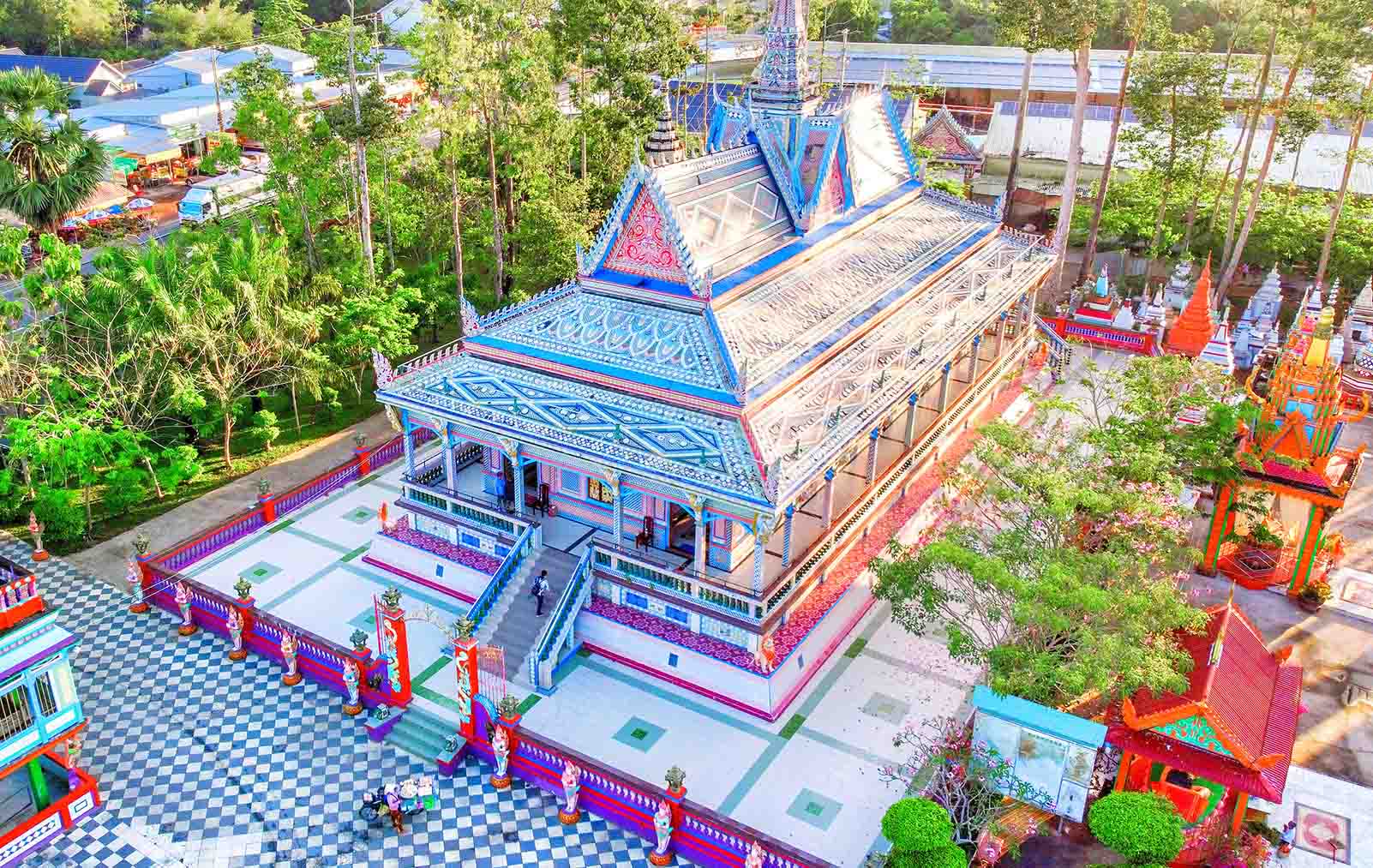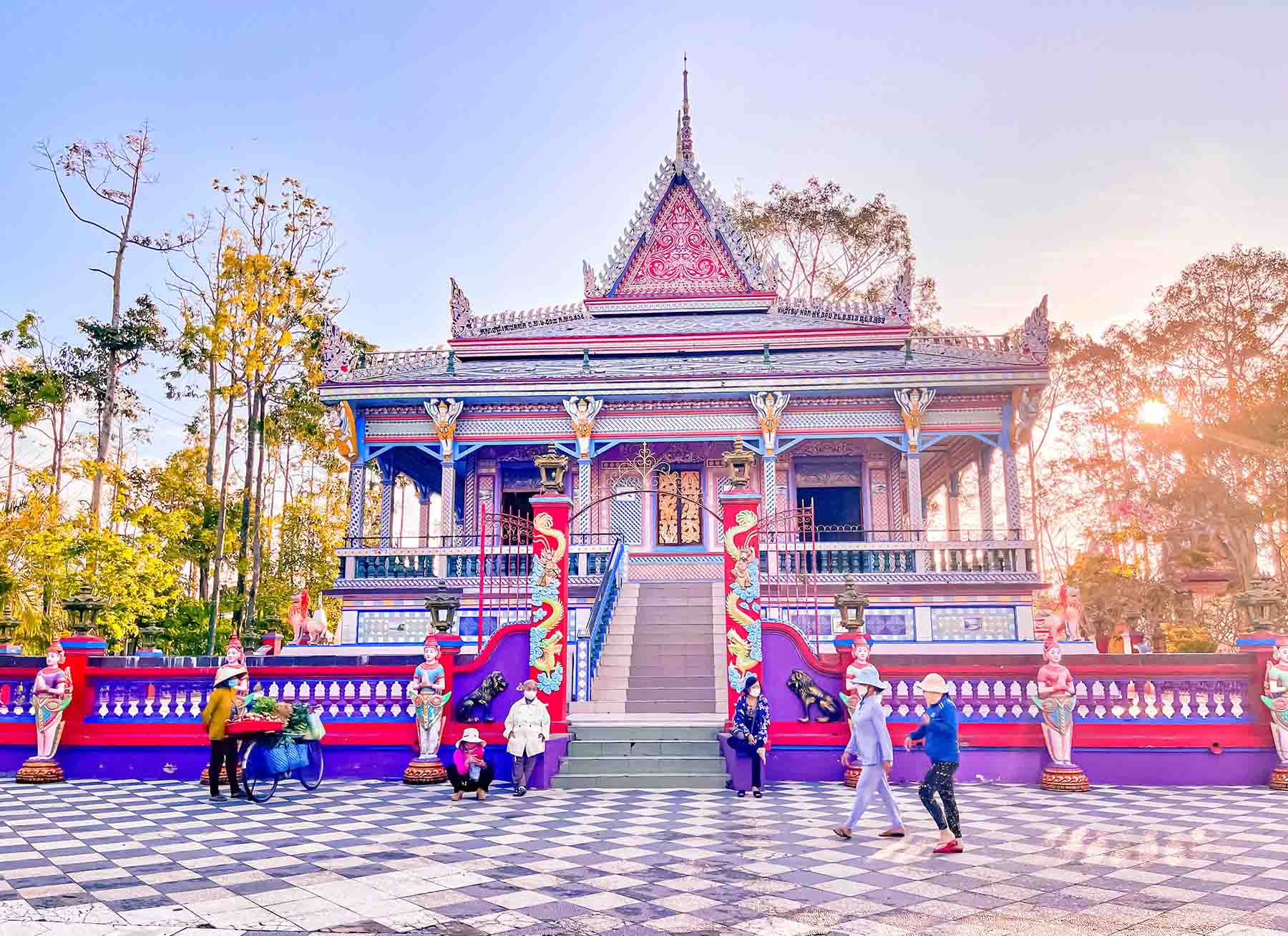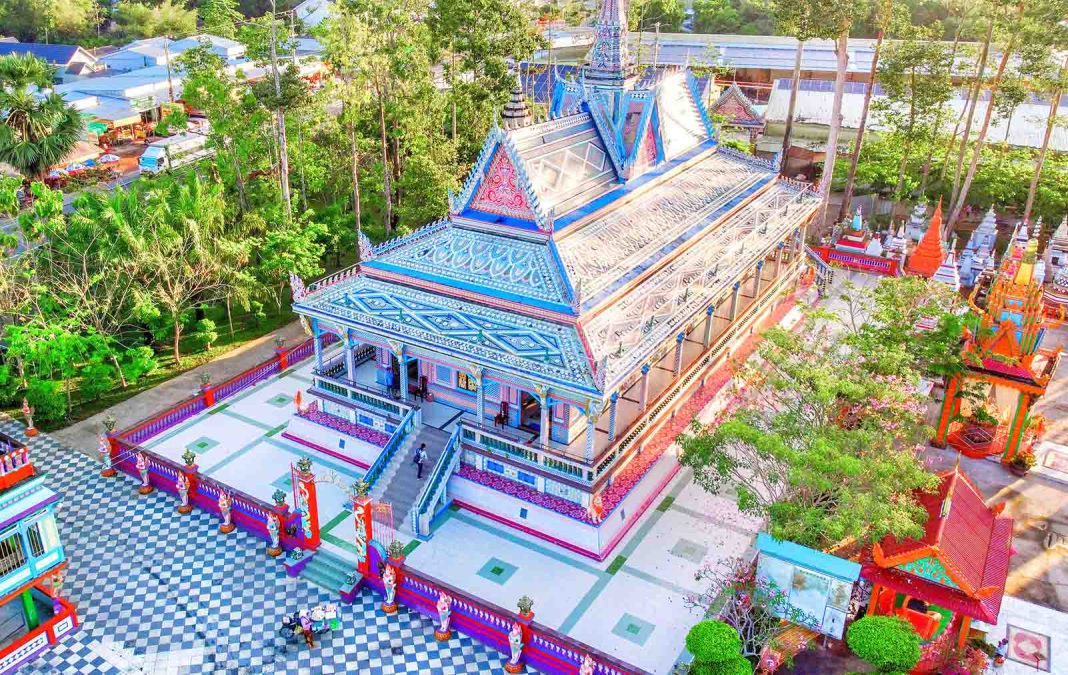Nestled in Soc Trang Province, Chen Kieu Pagoda, also known as Sa Lon Pagoda, is a sacred site for the Khmer community. With a history spanning over 200 years, it stands as a testament to the enduring cultural and religious traditions of the Khmer people in Vietnam.
Located in Dai Tam Commune, My Xuyen District, about 12 kilometers from Soc Trang City, Chen Kieu Pagoda was originally built in 1815 using natural materials such as leaves, wood, and clay. The pagoda suffered extensive damage during wartime bombings and was rebuilt in 1969, adopting its current architectural style, which includes a main hall, sala, stupa, and scripture house.

During the reconstruction, a shortage of building materials led the monks to take a creative approach—they called on villagers to donate old porcelain bowls and plates, which were then used to decorate the pagoda’s walls. This not only reduced construction costs but also resulted in the intricate, colorful mosaic patterns that define the pagoda today. The temple soon became widely known as “Chen Kieu Pagoda,” meaning “Pagoda of Porcelain Bowls.”
Skilled Khmer artisans carefully arranged the porcelain pieces to adorn the walls, pillars, and stupas. Newer pieces were embedded into the decorative balustrades, while broken or chipped ones were meticulously arranged into floral and geometric patterns.
One of the most striking architectural features of the pagoda is the Kayno goddess sculptures, which adorn the tops of the main hall’s pillars. With wings outstretched, these celestial beings appear to be lifting the eaves, seamlessly connecting the towering columns to the horizontal roof.

Inside the main hall, 16 massive columns rise toward the ceiling, each intricately sculpted with Khmer cultural motifs. The walls are adorned with paintings depicting the life of Gautama Buddha, from his birth to his enlightenment, offering visitors a glimpse into Buddhist teachings and traditions.
Spanning two hectares, the pagoda’s lush green grounds provide a tranquil landscape, surrounded by towering trees that offer shade and serenity. More than just a religious site, the pagoda is a living testament to Khmer artistic heritage, offering visitors a peaceful sanctuary infused with history, culture, and spirituality.










